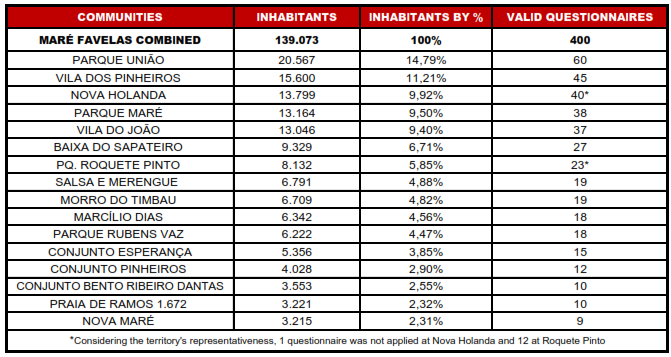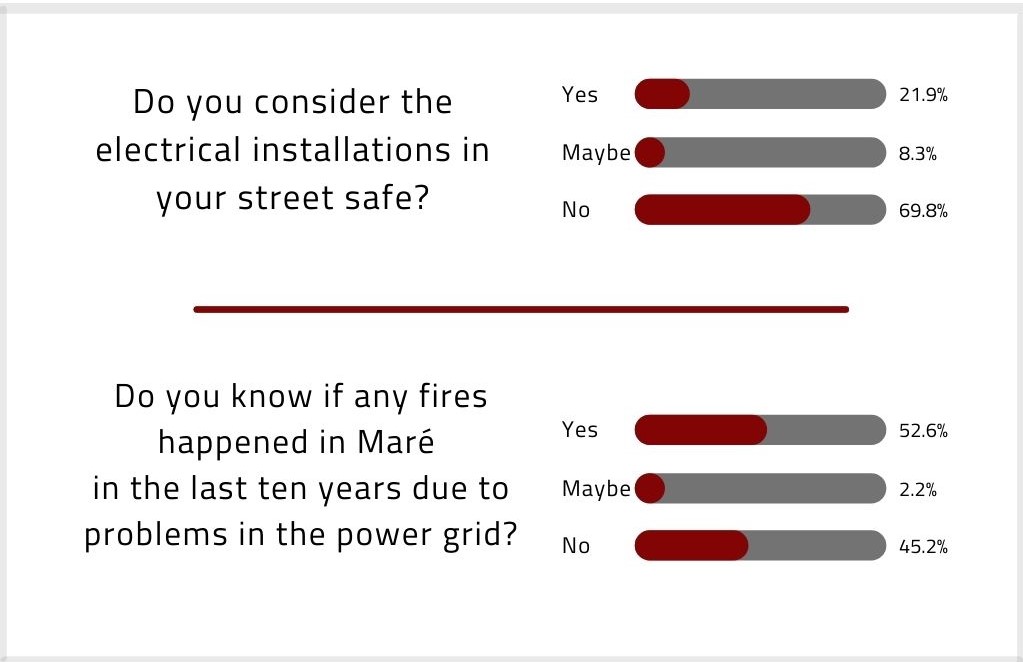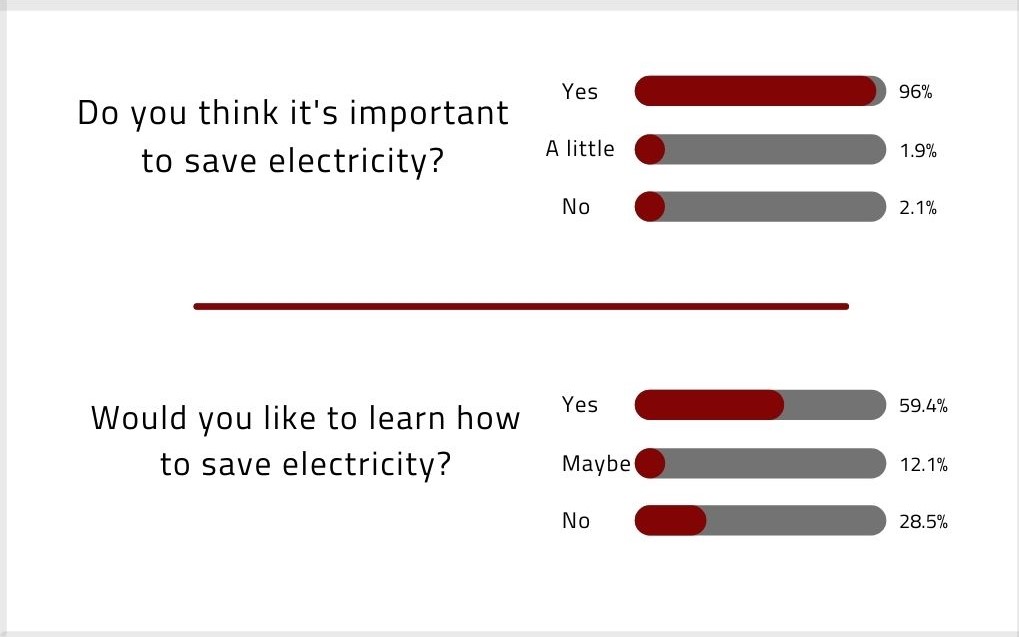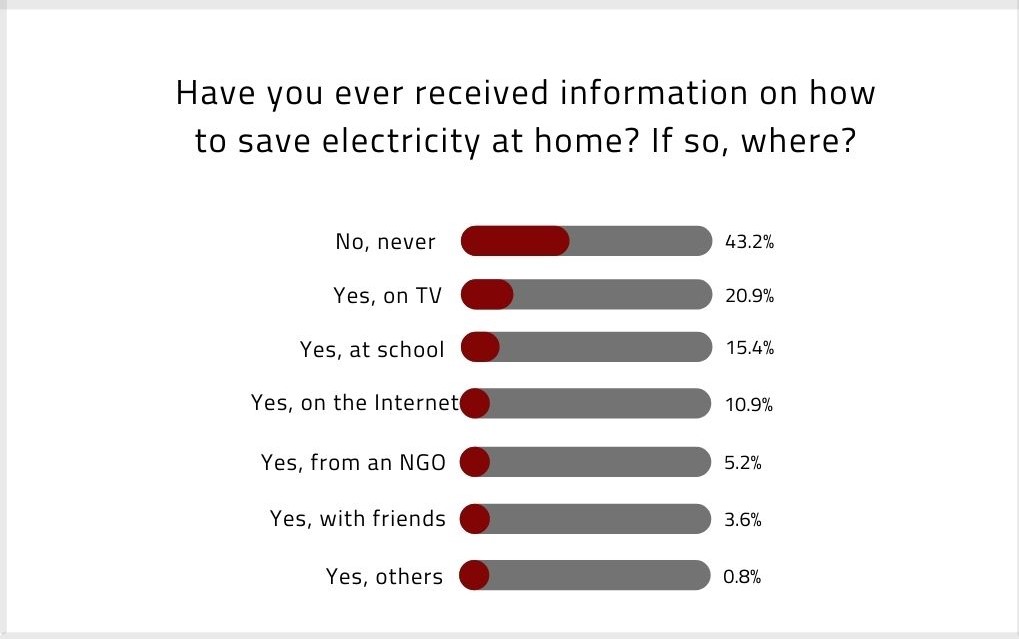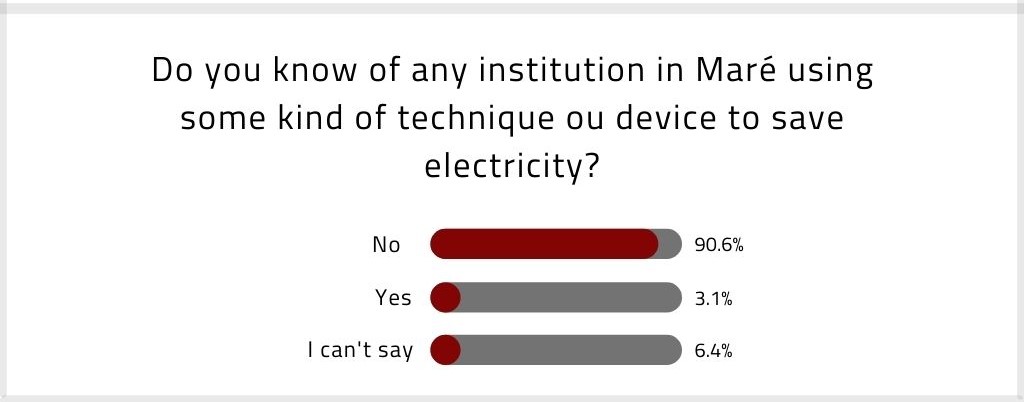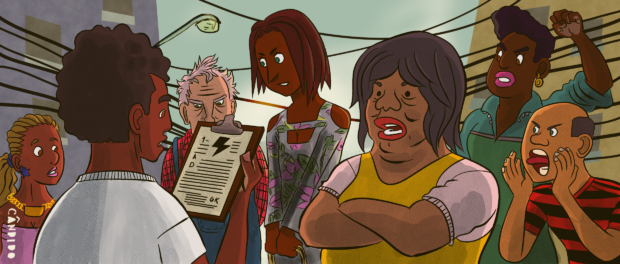
This article is part of a series on energy justice and efficiency in Rio’s favelas.
What is the perception of favela residents about the quality of energy service delivered to their communities? This issue guided a survey used to interview 400 residents living among the 16 communities that make up Complexo da Maré, located in Rio de Janeiro’s North Zone. The aim of the study was to understand how the current facilities and services provided by the electric utility, Light, affect residents’ daily lives. Additionally, it addressed whether Maré residents, or “Mareenses,” have access to information and are therefore aware of the finite nature of the energy resources that bring electricity to their homes.
Since the 1990s, Maré has been one of the most densely populated areas in Rio. Data collected in 2010 by the Brazilian Institute of Geography and Statistics (IBGE), show that approximately 129,700 people lived in the 16 communities that make up this favela territory. Three years later, between 2012 and 2013, another survey conducted by NGO Redes da Maré registered 139,073 inhabitants in the region, living in 47,758 homes. According to the Maré Population Census, conducted in 2019, the occupancy rate per household in Maré was 2.91, that is, almost three people per household.
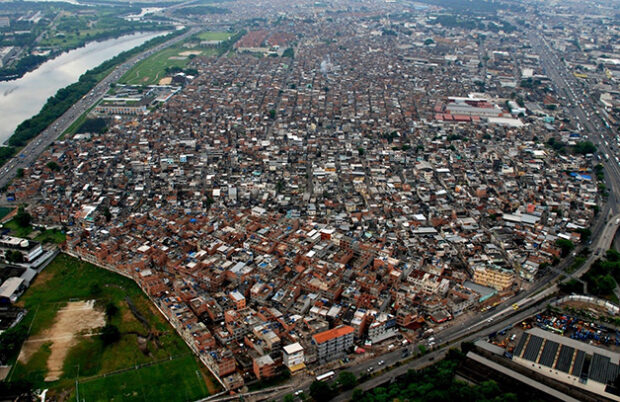
Based on these data, a survey was conducted between February and April of this year selecting a sample proportional in size to the population of each of Maré’s 16 territories. Residents were invited to answer an online questionnaire, with questions based on their consumption profile, and asked to evaluate the energy service received, in addition to providing their own basic demographic data. During this online stage, 2,000 residents received the questionnaire via WhatsApp, with 289 answering all eleven questions. Subsequently, in-person interviews with additional residents were added to the data-gathering strategy to supplement the base data.
The in-person survey portion was carried out in keeping with Covid-19 health protocols. Each questionnaire was completed online by the researcher himself, avoiding the exchange of objects between those involved. However, the physical approach of a stranger, combined with the use of masks, hindered the participation of residents, who sometimes showed distrust in providing information, especially personal demographic data. The total number of interviews, both online and face-to-face, amounted to 426 responses, of which 400 were validated based on population proportionality for each of the 16 communities, as shown in the graph below. The research methodology for this survey can be accessed here.
Residents’ Perception of Grid’s Safety
Historically, favelas face a number of problems with electricity supply. The quality of the service provided affects the lives of thousands of people who reside in these neighborhoods and who routinely have to bear power outages and the lack of safety in distribution. Approximately 69% of Maré residents interviewed for this survey feel electrical installations in the street where they live are unsafe. Only 21% of respondents have a positive perception of the power grid. This means that for every ten residents surveyed, only two feel safe with the distribution grid that serves their homes. Houses hit by fallen utility poles, hanging electric wires and even entire blocks without power were some of the observations shared by interviewees.
Accidents caused by failures in the electric system also create concerns for those who live in favelas. Over half of the residents surveyed—52.6%—say they know of at least one case of a fire caused by problems in the Complexo da Maré power grid over the last ten years. One of the episodes mentioned by the interviewees occurred in November 2020 in Vila do João, when a house caught fire. Incidents like are more common in summer, when temperatures soar and the use of fans and air conditioning increases, which in turn overloads electric installations inside and outside homes.
Another frequent problem reported by Maré residents are power outages, which, according to them, are the main cause of home and electric appliances burning. Supply failures can cause blackouts either for a certain period, or frequent fluctuations, causing the erratic operation of lightbulbs and household appliances. Among the respondents in this survey, approximately half—or 48.5%—reported already having lost some household appliances due to electrical problems. A similar percentage of residents, however,—48%—said they never faced appliance losses due to power outages.
Conscious Consumption: What Does the Resident Think?
Most Maré residents contacted for this survey agree that saving energy is fundamental. Only 4% of respondents said they did not consider it important or have not formed an opinion on the topic. The perception of the need to reduce energy consumption is linked to the need to save on the electric bill, which disproportionately impacts peripheral families’ budgets. Brazil has very expensive electricity compared to other countries, and those who live in Maré, and who are not included in the government’s subsidy program, pay the same rates charged outside favelas, in neighborhoods where middle and upper-class families live.
Reduced electric bills are not, however, the only reason behind the conscious perception of the need to save energy. Mitigating environmental damage is also among interviewees’ motivation. Six out of ten residents—or 59.4%—said they would like to learn practices and techniques to reduce electricity consumption. Another 12% said they might be interested in the topic. This means that approximately 70% of respondents have, to some degree, a willingness to learn more about the issue.
Educational materials on how to save energy, or on the impacts of energy consumption on the environment are unavailable to 43.2% of survey respondents. Among those who answered they had had access to this type of content, the majority, or 20.9%, stated TV was their source. This comment suggests advertising campaigns and news stories aired on television may be responsible for much of the energy savings information received by Maré residents. However, it was not possible to verify the degree of efficiency of these campaigns in changing consumer behavior.
Schools appear as the second source of information on conscious energy consumption, with a rate of 15.4%, followed by the Internet, with 10.9%, and NGOs, mentioned by 5.2% of respondents. Maré has several institutions that develop socio-environmental projects and realize educational and informational campaigns on the subject. From our survey, we did not find any organization specifically focused on an energy efficiency and conscious consumption agenda, although this theme ends up being addressed indirectly through the work developed by their projects.
From an exploratory perspective (i.e., going into the field to discover new information), we also asked our interviewees if they knew of any institution that used devices or techniques to try to save electricity. About 90% of respondents said they were unaware of any, while 6.4% said they might know of some but were not sure. Only 3.1% said they knew about initiatives with this objective.
The Voices Heard for This Survey
In this survey, residents of all 16 favelas that make up Complexo da Maré were contacted. The localities with the highest number of interviewees are also the most densely populated. The communities of Parque União, Vila do Pinheiro and Nova Holanda, which are the most populous, were consequently the ones to have the largest research sample with the completion of 60, 45 and 40 questionnaires, respectively. The communities known as Conjunto Bento Ribeiro Dantas, Praia de Ramos, and Nova Maré, which have a smaller number of residents, made up a smaller research sample, with 10, 10 and 9 interviewees, respectively.
The majority of interviewees were female, making up 59.2% of respondents, while men represent 40.8%. Participants were between 16 and 69 years old. The inclusion of minors in the sample was due to the socioeconomic configuration of families in Maré—where minors are sometimes heads of households. Participants between ages 16 and 29 represented 28.9% of total interviewees. Another 26.3% were between 30 and 39 years old; 25.4% between 40 and 49 years old; 14.9% between 50 and 59 years old; and finally, 4.2% between 60 and 69 years old.
About the author: A resident of Complexo da Maré, Lourenço Cezar da Silva holds a degree in Geography and Environment from the Pontifical Catholic University of Rio de Janeiro (PUC-Rio) and a Master’s degree in Education from the Federal University of Rio de Janeiro (UFRJ).
About the artist: Rodrigo Cândido is an illustrator and comics artist, whose focus is to put black people in every imaginable narrative. His work has influences of Afrofuturism, games, music, and the history of great black men and women who have shaped humanity.
This article is part of a series on energy justice and efficiency in Rio’s favelas.

